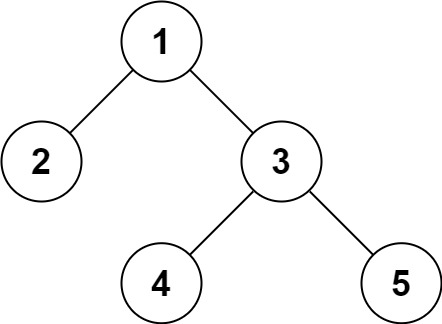Serialization is the process of converting a data structure or object into a sequence of bits so that it can be stored in a file or memory buffer, or transmitted across a network connection link to be reconstructed later in the same or another computer environment.
Design an algorithm to serialize and deserialize a binary tree. There is no restriction on how your serialization/deserialization algorithm should work. You just need to ensure that a binary tree can be serialized to a string and this string can be deserialized to the original tree structure.
Clarification: The input/output format is the same as how LeetCode serializes a binary tree. You do not necessarily need to follow this format, so please be creative and come up with different approaches yourself.
Example 1:
Input: root = [1,2,3,null,null,4,5]
Output: [1,2,3,null,null,4,5]
Example 2:
Input: root = []
Output: []
Constraints:
- The number of nodes in the tree is in the range
[0, 104]. 1000 <= Node.val <= 1000
給定一個二元樹結點 root 要求要實作 serial, deserial 方法
可以透過 DFS 實作 Pre-order format
如下圖
import (
"fmt"
"strconv"
"strings"
)
/**
* Definition for a binary tree node.
* type TreeNode struct {
* Val int
* Left *TreeNode
* Right *TreeNode
* }
*/
type Codec struct {
}
func Constructor() Codec {
return Codec{}
}
// Serializes a tree to a single string.
func (this *Codec) serialize(root *TreeNode) string {
result := []string{}
DFS(root, &result)
return strings.Join(result, ",")
}
func DFS(root *TreeNode, result *[]string) {
if root == nil {
*result = append(*result, "N")
return
}
*result = append(*result, fmt.Sprintf("%d", root.Val))
DFS(root.Left, result)
DFS(root.Right, result)
}
// Deserializes your encoded data to tree.
func (this *Codec) deserialize(data string) *TreeNode {
vals := strings.Split(data, ",")
i := 0
return DE_DFS(&vals, &i)
}
func DE_DFS(vals *[]string, i *int) *TreeNode {
if (*vals)[*i] == "N" {
*i++
return nil
}
num, _ := strconv.Atoi((*vals)[*i])
*i++
node := &TreeNode{Val: num}
node.Left = DE_DFS(vals, i)
node.Right = DE_DFS(vals, i)
return node
}- Understand DFS
- Understand what problem need to solve
- Analysis Complexity

